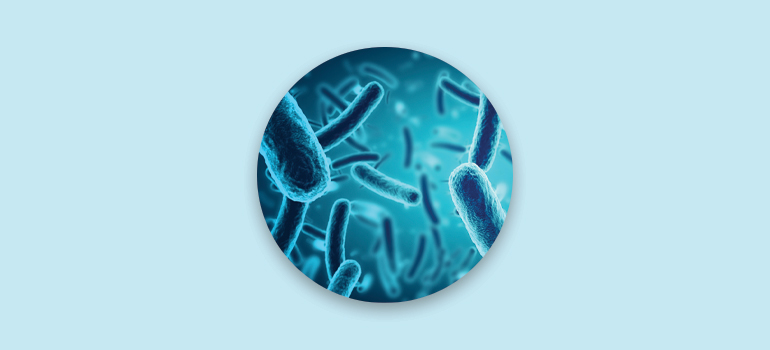Postbiotics- An Emerging Trend in Functional Food And Beverages
Our intestines are sterile when we are born, but due to mother’s milk and tongue exploration, our intestines are quickly colonised by microorganisms that ferment vitamins and produce vital bioactive substances that regulate our body structure and metabolism. The human body coexists with these naturally occurring, health-promoting microbes. To put it another way, they live in our gut while we reap the benefits of their presence and by-products. Medicines, stress, nutrition, and sickness can all have a negative impact on the gut microbiota’s natural population. Several independent research groups found decades ago that it is possible to repopulate the intestinal flora with diet. Probiotics and prebiotics were discovered here first, and postbiotics are now known to play a vital role as well.
Postbiotics: The Endgame of Probiotics?
By altering the gut microbiome, probiotics offer various health benefits; nevertheless, techno-functional restrictions such as viability controls have hindered their full potential usage in the food and beverage industries. As a result, the focus is changing away from viable probiotic bacteria to non-viable para-probiotics and/or biomolecules derived from probiotics, also known as postbiotics. Para-probiotic and postbiotic are emerging concepts in the functional foods sector, because they offer a variety of health-promoting qualities.
Postbiotics have risen to prominence in the supplement, functional food, and beverage markets due to their safety, efficacy, and ease of manufacture. Apart from the health benefits, postbiotics are a smart option to prebiotics and probiotics because they do not require specific production or storage conditions because they are not living microbial cultures. Postbiotic solves the problems that probiotics caused in the past when it came to product development. Postbiotic is heat, pressure, and shelf stable, due to the lack of living or active cultures.
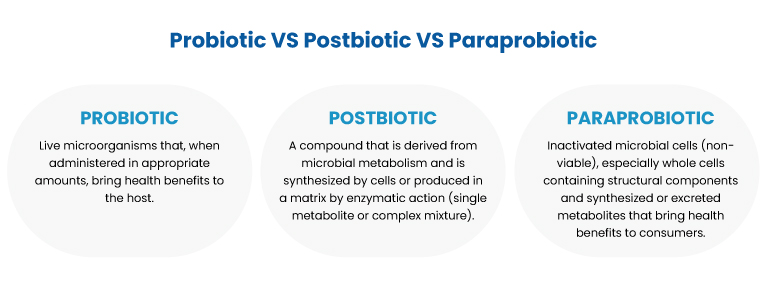
The Concept of Postbiotics
Probiotic bacteria can be inactivated via physical or chemical treatments that change microbial cell components (cell membranes and envelopes, proteins, DNA, etc.) and physiological functions (enzyme activities and membrane selectivity) without destroying the cell structure.
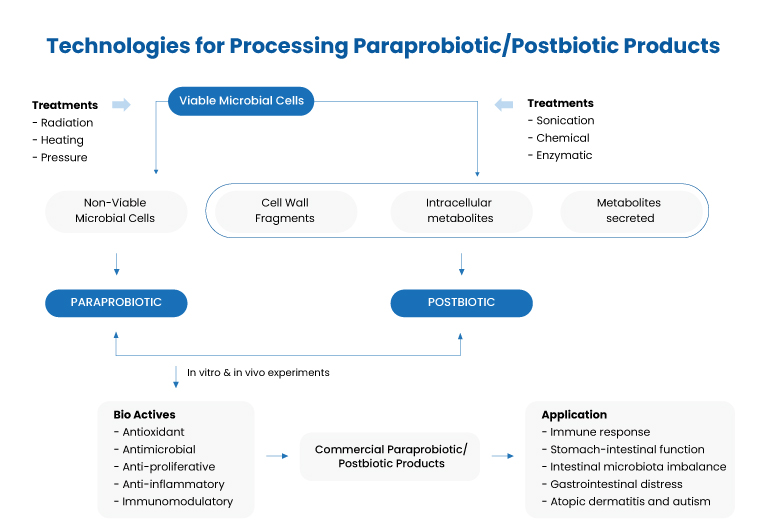
What makes Postbiotic so attractive?
Postbiotics may have an impact on the health of the host through a variety of mechanisms. Five possible modes of action for postbiotics have been proposed:
- Modulation of the resident microbiota
- Enhancement of epithelial barrier functions
- Modulation of local and systemic immune responses
- Modulation of systemic metabolic responses
- Systemic signalling via the nervous system
The mechanisms described here can work alone or in combination. Because postbiotics are by-products of microbes, they must be present in sufficient quantities to activate these mechanisms. In addition, postbiotic provides several distinct advantages:
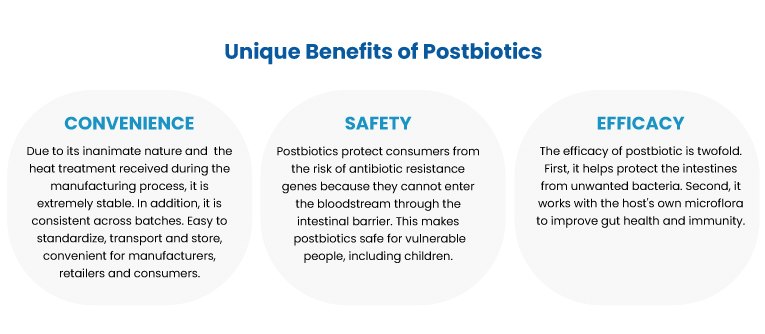
Postbiotic Commercial Products
The International Scientific Association for Prebiotics and Probiotics (ISAPP) aims to make postbiotics a globally recognised category. Below is an indicative list of products available in ‘functional food & beverages’ and ‘dietary supplements’ categories.
Functional Food & Beverages
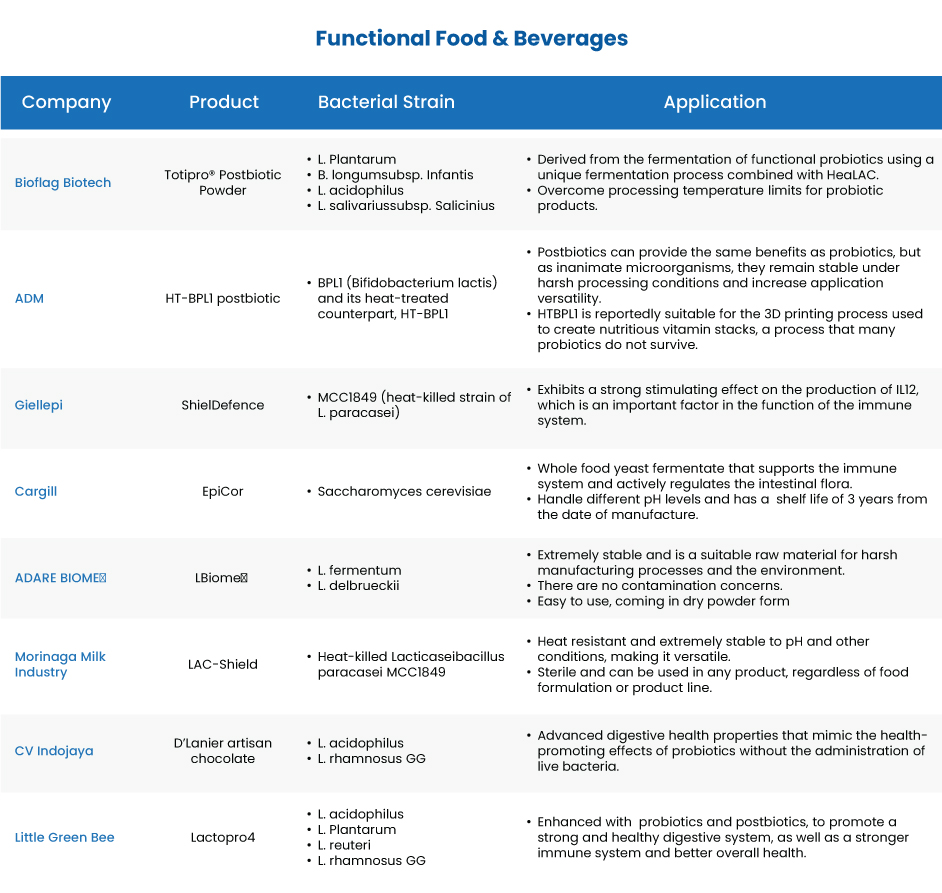
Dietary Supplements
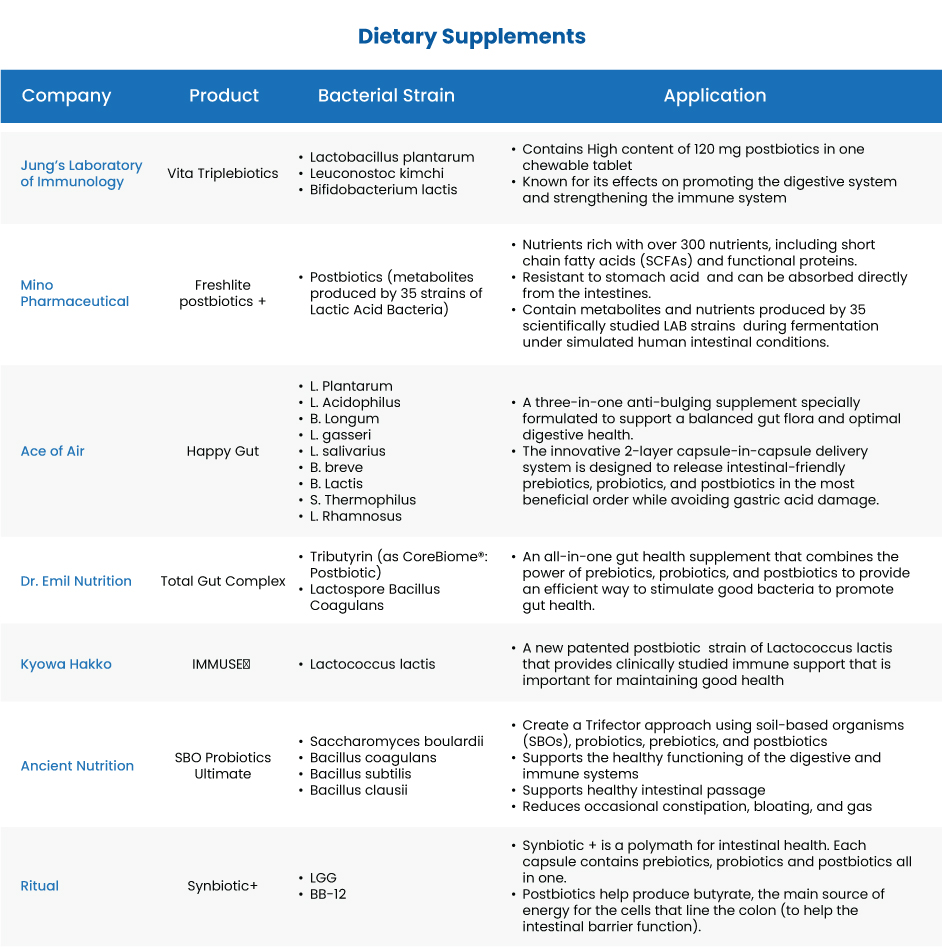
Postbiotic And Food Safety
In the food industry, the utilisation of certain bacteria (probiotics) to extend shelf life and prevent microbial decomposition of foods, as well as their antimicrobial metabolites (organic acids, peptides, hydrogen peroxide, proteins, vitamins, and bacteriocins), has a long history. Despite the numerous benefits of lactic acid-producing bacteria over antibiotics and chemical additions, there are numerous problems associated with their use.
- The usage and maintenance of live probiotics is one example in this regard. Foods containing live probiotic bacteria might cause clinical difficulties in some persons, especially those of various ages and physical conditions, as well as those with weakened immune systems. As a result, using live probiotics may be linked to major health issues.
- Another key challenge in this area is the emergence of resistance to commonly used antibiotics and the potential transfer of resistance genes to pathogenic organisms in the host’s gut. There are also opportunistic pathogenic bacteria in the gut flora, in which the acquisition of antibiotic resistance can cause serious problems. Some evidence also suggests the presence of antibiotic-resistant species in the food manufacturing process. The resistance profile of these bacteria shows that infants are more sensitive to antibiotics compared to the elderly group.
- Other notable challenges and limitations relate to the production and maintenance of live bacteria with beneficial performance. In the industry, most probiotics belong to the family Lactobacillus which are non-spores and very sensitive to adverse environmental conditions, resulting in loss of optimal performance during time and storage. On the other hand, providing the right platform for a continuous cold chain from production to consumption often requires high costs. In the food industry, some dairy products and beverages are common as carrier systems for probiotics. The cost of storing probiotics is high and there are clinical problems caused by live probiotics, so using non-living forms of probiotics (postbiotics) is a good solution.
Postbiotics play an antimicrobial role to enhance food safety (food storage and packaging, control and elimination of food-derived pathogenic biofilms, prevention of the growth of rotting microorganisms). Of course, the antimicrobial role of postbiotics in the food industry depends on factors such as the strain of live parent cells of postbiotics, the type and concentration of postbiotics, the type of food model, and the characteristics of the food matrix. One of the most important effects of postbiotics in the food industry is the control of microorganisms that ruin food. A fundamental part of the antimicrobial properties of postbiotics is due to the presence of organic acids, bacteriocins, peptides, fatty acids, and hydrogen peroxide compounds.
The Impact of Food Factors on Postbiotics Performance
Many factors affect postbiotics performance, including internal and external factors. Both factors are associated with food matrix compounds and food storage environment, respectively. These factors have a significant impact on the type, structure, function of postbiotics, optimal conditions in the production and application of postbiotics in the food matrix.
Internal factors
Various compounds in foods can affect the function of postbiotics. Interactions between active metabolites of postbiotic and certain food substances (endogenous microflora, enzymes, carbohydrates, proteins, fats) can interfere with the function of the metabolites. For e.g., proteolytic enzymes in the food can affect the activity of postbiotic compounds. Proteolytic enzymes can break down postbiotic protein compounds and prevent them from functioning. These enzymes may either be present in the food or secreted by dietary proteolytic bacteria. The most important enzymes are pepsin, trypsin, chymotrypsin, papain and proteinase K. For example, when applying proteinaceous postbiotics, enzyme proteases break down proteins and prevent postbiotic effects. Therefore, proteolytic enzymes are one of the factors to consider regarding postbiotic dysfunction. However, there are no reports of synergistic or antagonistic activity of postbiotic mixtures with food compounds.
External factors
Food pH can affect the antimicrobial activity of postbiotics. Acidic and alkaline foods can hinder the functioning of postbiotics. Postbiotic activities have a specific range, the pH range of 4-9 is the optimum range for postbiotic activity. In a food model that used postbiotics to control microorganisms, pasteurized milk and ground beef showed good pH and there was no interruption in postbiotic functioning. Heat is also an external factor that can hinders the performance of postbiotics i.e., heat can impair the antimicrobial activity of postbiotics. In this case, it is important to keep the temperature coefficient at the optimum level during processing and preparation conditions.
Consumers and Postbiotics
The starting point for a good overall health is a healthy microbial flora. This idea, which is becoming equally shared among healthcare professionals and consumers, has brought the biotics market to the forefront. Previously, the market focus on prebiotics and probiotics. But now, postbiotics is increasing in the limelight.
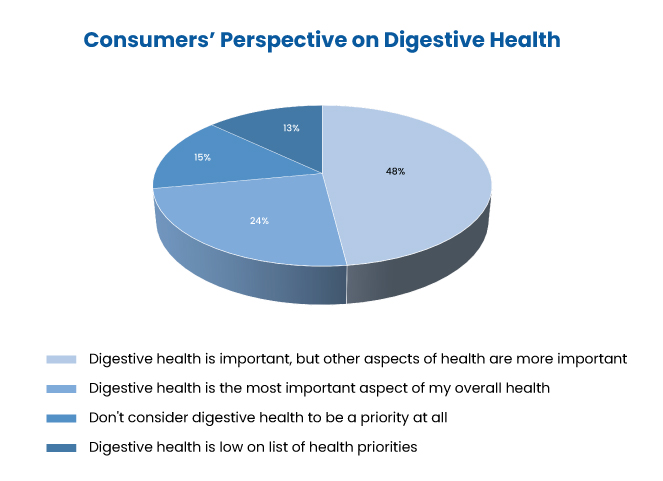
At the moment, the term postbiotic is unfamiliar to consumers, but it can change over time as more products hit the market. Consumers use terms such as “postbiotic diet supplements,” “postbiotic foods,” and “postbiotic powders” to learn about the health benefits of postbiotics and search for a particular format of postbiotics on a regular basis. Consumers today are looking for new products to improve their digestive health. As a result, the number of postbiotic products on the market for humans and animals is increasing in all markets, including dietary supplements, functional foods and beverages. Therefore, in many opportunities, the postbiotic market continues to take a shape.
Future & Scope
Postbiotics has become the fastest growing area in terms of intestinal health search, with related searches increasing by approximately 1,300%. It shows that consumer interest in this area is growing. Search volumes and articles published over the last two years show that consumers in the market are ready to purchase products using postbiotics as part of their formulation.
Experts hope that postbiotics will have biological functions in the human body and will provide an interesting area for new research and development. As the research field develops, manufacturers are launching new products to meet the needs of a wide range of customers. Postbiotics supplements have fewer storage and shelf-life challenges than viable probiotics, making them an elegant and safe way to improve digestive health.
Increasing demand for sports nutrition products is driving the use of postbiotic supplements in North America and European countries as an active lifestyle becomes more important and awareness of the benefits of taking postbiotic supplements increases.
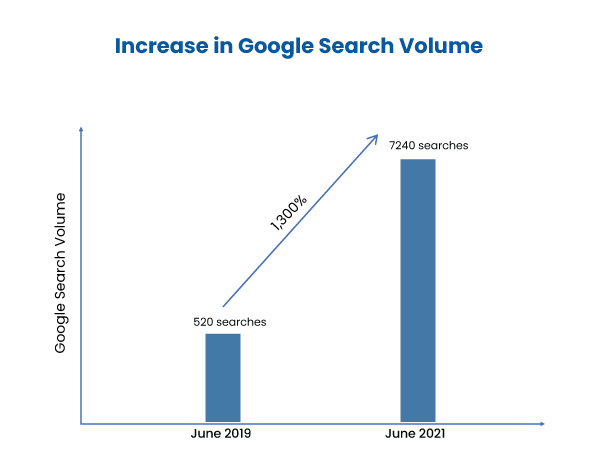
Conclusion
Growing health concerns and subsequent shift towards functional foods have expanded the horizon for postbiotic-based foods and beverages. People are aware of the importance of gut microbiota and the effect it causes on their overall health. To eliminate the technical challenges caused in incorporating viable microbial cultures in certain foods & beverages and the fact that they could cause health problems in immunocompromised patients have brought microbial metabolites into spotlight. Search volume and research data shows that the consumers’ demand for healthy food alternatives has shifted the food & beverage industry. The market shows there is an opportunity for brands to incorporate postbiotics in their product formulations to enhance consumer appeal. Apart from all the health benefits, postbiotics can reduce the use of food additives because they act as emulsifiers and preservatives ensuring the product stability.
There are few studies on the benefits of postbiotics, and researchers are still attempting to figure out how to link postbiotic production to health impacts. Most of the current research compares supplements to pre- and probiotic food intake. Immune function and gastrointestinal comfort are two areas where research is showing promise. Postbiotic supplementation has been demonstrated in certain studies to prevent the development of respiratory tract infections while also reducing the symptoms of IBS and inflammatory bowel disease. So, if not more important than pre-probiotics, then postbiotics are equally important in maintaining and improving human health. Due to their unique properties (safe profile and stability under manufacturing and storage conditions), postbiotics are also a promising tool for preventing the growth of potential food-borne pathogens and promoting host health.
How Can IEBS Help You?
Ingenious e-Brain Solutions is a global provider of intellectual property, technology, commercial, and market research solutions. Ingenious e-Brain creates solutions that are adapted to your company’s needs. Our staff assists clients in all parts of their business with a unique blend of skills, proven processes, and knowledge base. With the help of our experience in drug life cycle management, IEBS can provide actionable insights in drug repositioning space by identifying drug-target receptor pathways, emerging repositioned drugs, and competitors’ strategies. IEBS can also provide answers to various other queries using a variety of problem-solving techniques.
Article by Ingenious e-Brain Solutions :-
Contact us :-
US Office:-
4 Heinrick Way Bridgewater,
New Jersey 08807, USA
Phone:-
+1 347 480 2054
+1 202 697 9162
India Office:-
207-208 Welldone TechPark, Sohna Road
Sector 48, Gurugram,Haryana 122018, India
Phone:-
+91 124 429 4218
Email:-
contact@iebrain.com

